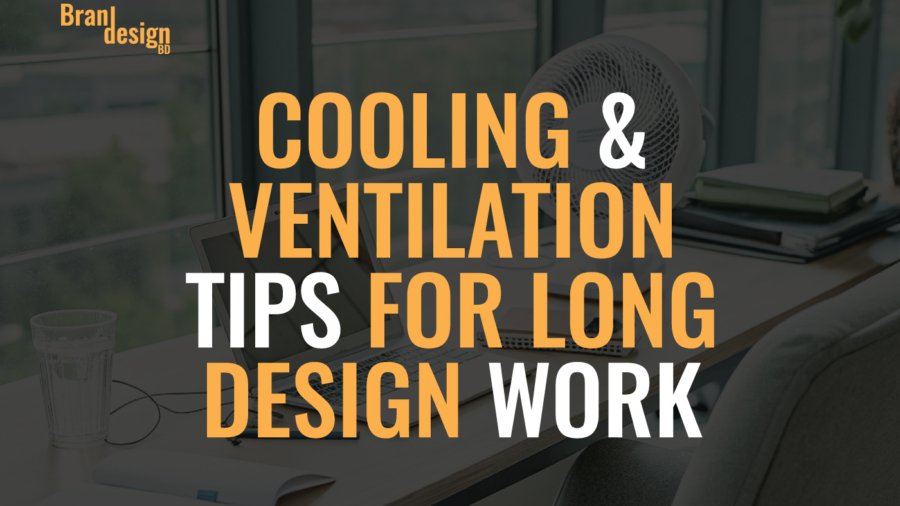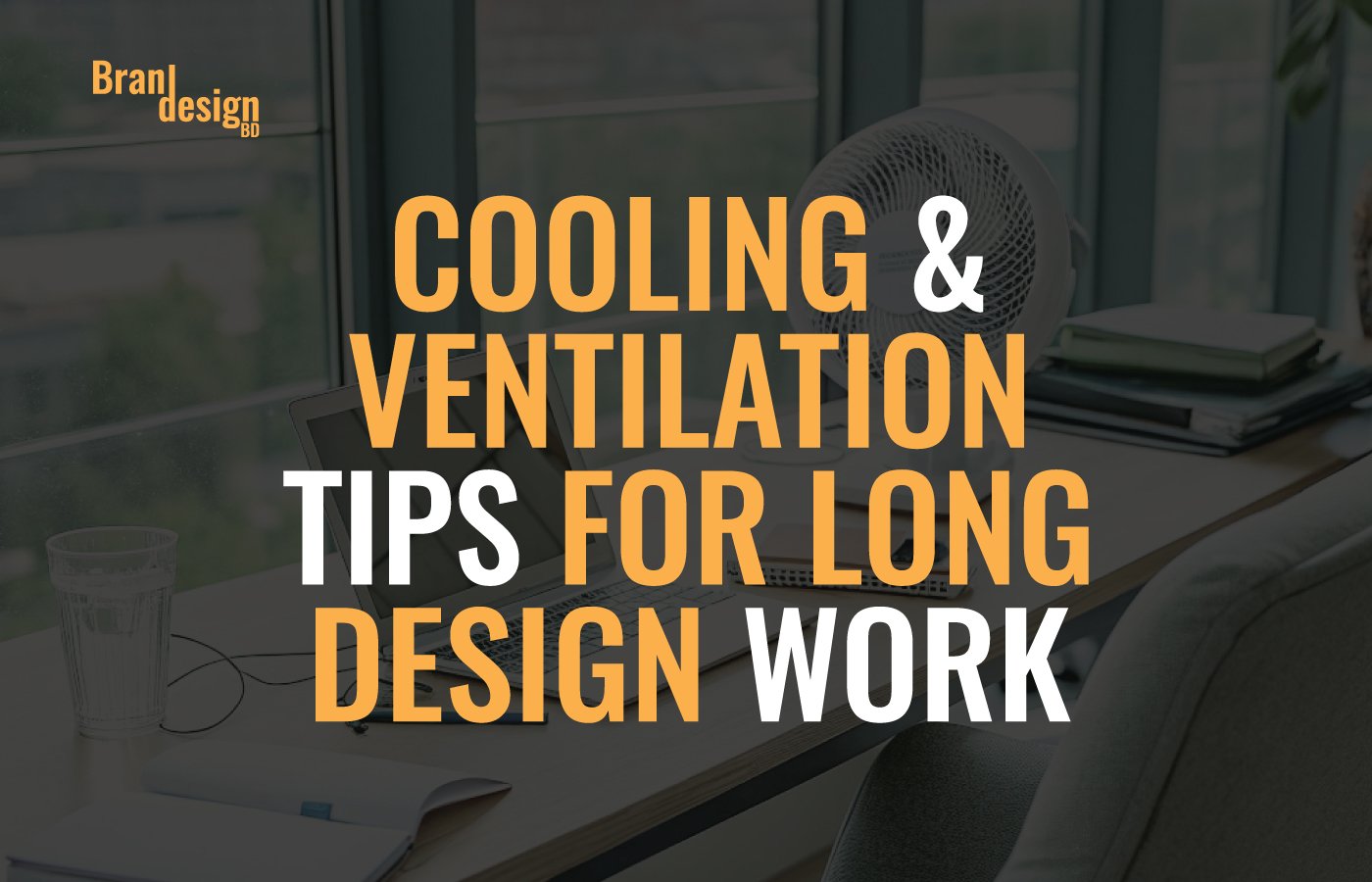
Table of Contents
- Introduction
- Understanding the Importance of Cooling & Ventilation for Designers
- Assessing Your Workspace for Cooling Improvements
- Effective Cooling & Ventilation Tips for Designers
- Desk Setup Adjustments for Better Cooling
- Personal Cooling Strategies for Long Work Sessions
- Advanced Cooling Solutions for Design Studios
- Maintaining Ventilation Equipment
- Ergonomics and Cooling: Working Together
- Seasonal Cooling & Ventilation Tips and Adjustments for Designers
- Combining Cooling & Productivity Practices
- Common Mistakes to Avoid in Cooling & Ventilation
- Conclusion
Discover practical cooling & ventilation tips to keep your workspace comfortable and productive during long design work sessions. Learn how airflow, temperature control, and ergonomic adjustments can enhance your creativity and focus.
Introduction
Long design work sessions can be incredibly rewarding, but they often come with a hidden challenge—maintaining a comfortable and well-ventilated environment. Whether you’re crafting detailed illustrations, building intricate UI layouts, or editing high-resolution images, heat and poor air circulation can quickly sap your energy and hinder productivity.
The good news is that with the right approach to cooling and ventilation, you can keep your workspace fresh, your body comfortable, and your mind focused. This guide explores a range of cooling & ventilation tips tailored for designers, ensuring you work efficiently without feeling overheated or sluggish.
Understanding the Importance of Cooling & Ventilation for Designers
Why Comfort Matters in Creative Work
Design work requires sustained focus, precision, and creativity. When your environment is too warm or stuffy, your cognitive abilities decline, and even simple tasks start to feel difficult.
The Link Between Temperature and Productivity
Studies show that working in excessively warm spaces can lead to slower reaction times and more mistakes. For designers working on client projects, this can affect output quality and deadlines.
Health Benefits of Proper Airflow
Good airflow not only prevents heat buildup but also reduces indoor pollutants, helping you avoid headaches, fatigue, and eye strain during long design sessions.
Assessing Your Workspace for Cooling Improvements
Identifying Heat Sources
Before improving cooling, pinpoint the sources of heat in your workspace. Computers, monitors, and desk lamps can contribute significantly to rising room temperature.
Evaluating Air Circulation
Check whether your room has natural airflow through windows or if it relies solely on mechanical ventilation. Poor circulation often leads to stale air and discomfort.
Measuring Room Temperature and Humidity
A small digital thermometer with a humidity reader can give you real-time insight into your workspace climate, helping you make targeted adjustments.
Effective Cooling & Ventilation Tips for Designers
Optimizing Airflow with Fans
Fans are among the most accessible and cost-effective ways to improve airflow in your workspace. A desk fan can create a steady stream of air to keep you comfortable during long hours without dramatically altering the room’s temperature. For best results, position your fan to circulate air across your workspace instead of aiming it directly at your face. This prevents issues like dry eyes or irritation. If your workspace is larger, consider a tower fan that can oscillate and move air more evenly across the room.
Using an Air Conditioner Wisely
An air conditioner can be a game changer for temperature control, but it’s important to set it wisely. Keeping the temperature between 22°C and 24°C creates a comfortable environment without making it too cold. Overcooling may lead to stiff fingers and hands, which is especially problematic for designers working with fine tools, styluses, or keyboards. Using the AC’s energy-saving mode can help maintain a steady temperature without sudden temperature swings.
Harnessing Natural Ventilation
Whenever possible, take advantage of natural ventilation. Opening windows for even short periods during cooler hours of the day can help refresh the air and reduce stuffiness. The most effective technique is cross-ventilation—opening two windows on opposite sides of the space so air can flow through naturally. This helps push stale air out and draw fresh air in, giving you a healthier work environment.
Layering Ventilation Methods
Relying on a single cooling method isn’t always enough. Combining tools—such as running a fan while keeping a window slightly open—can make a significant difference. This layered approach ensures both air movement and temperature control, which is essential during long work sessions when electronic devices are generating extra heat.
Considering Portable Cooling Solutions
If you work in a shared space or can’t make permanent changes, portable cooling units can be an excellent investment. Mini evaporative coolers or portable air conditioners allow you to target cooling right where you need it. Look for models with adjustable fan speeds and timers so you can adapt them to your work patterns.
Monitoring and Adjusting Regularly
Cooling and ventilation needs can change throughout the day as outside temperatures shift and your equipment generates heat. Make it a habit to check the room’s temperature and airflow periodically. Small, consistent adjustments will keep your workspace comfortable and your focus sharp throughout your design sessions.
Desk Setup Adjustments for Better Cooling
Minimizing Heat-Generating Equipment
Many design workspaces have multiple devices running at once—monitors, laptops, external drives, printers, and even decorative lighting. Each of these produces heat that can raise the overall room temperature. Whenever possible, turn off or unplug devices you’re not actively using. Switching to energy-efficient LED desk lamps and low-heat electronics can also make a noticeable difference in keeping the temperature comfortable.
Common Sources of Heat in a PC
- High-performance CPUs and GPUs: These generate the most heat under heavy use.
- Power supplies: Older or low-efficiency PSUs can produce a lot of heat.
- Mechanical hard drives: They generate some heat but less than CPUs and GPUs.
- Poor airflow and cable clutter: Blocked fans and cramped spaces trap heat inside the case.
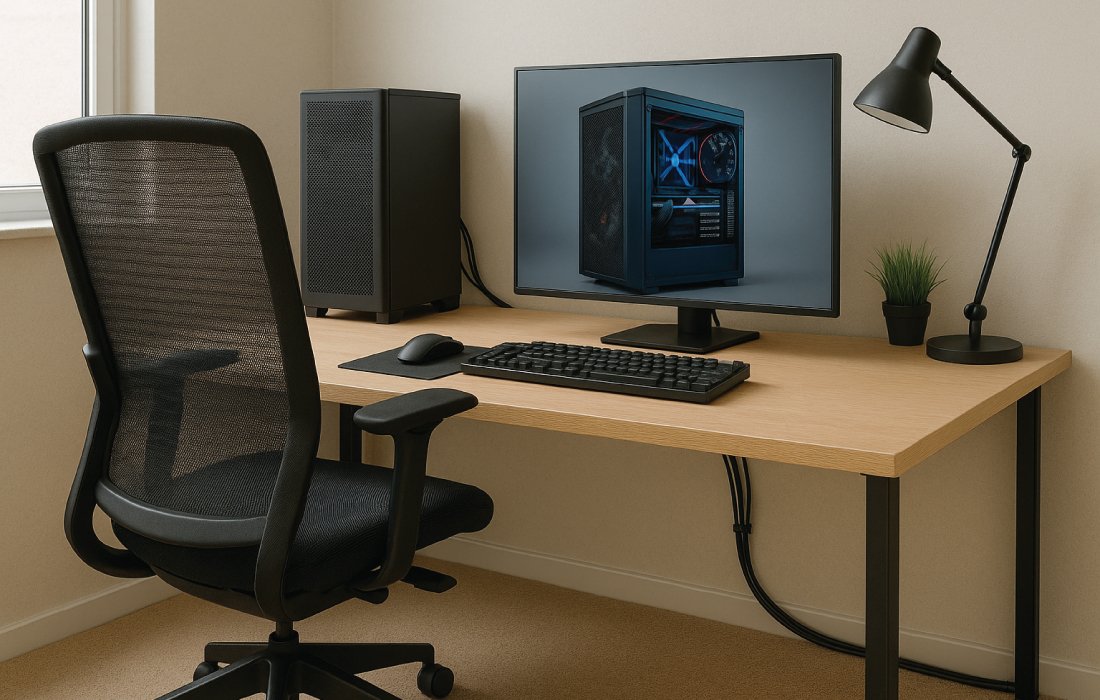
Organizing Cables for Better Airflow
Cables might not seem like a factor in cooling, but when they’re tangled and bunched together, they can restrict airflow around your equipment. Poor airflow leads to more trapped heat near your desk. Using cable ties, clips, or under-desk organizers keeps them tidy and ensures heat from devices dissipates more effectively. This small adjustment can have a surprising impact on keeping both your gear and your workspace cooler.
Choosing Breathable Chair Materials
Your seating choice affects more than just ergonomics—it can also influence body temperature during long design sessions. Chairs with mesh backs allow for better ventilation, preventing the buildup of heat against your back. This is especially useful in warm climates or during summer months when prolonged sitting can lead to discomfort. If replacing your chair isn’t an option, consider a breathable seat cover to improve airflow.
Adjusting Desk Placement for Cooler Airflow
The location of your desk in the room plays a big role in cooling efficiency. Placing it closer to windows, air vents, or fans allows you to benefit directly from air movement. Avoid positioning your desk in enclosed corners where air tends to stagnate. Even a slight shift in desk placement can improve cooling and make your workspace feel fresher during long design work sessions.
Personal Cooling Strategies for Long Work Sessions
Staying Hydrated
Drinking cool water throughout the day helps regulate body temperature and prevents dehydration, which can worsen fatigue.
Wearing Breathable Clothing
Lightweight, moisture-wicking fabrics keep you comfortable even if the room gets warmer during the day.
Taking Cooling Breaks
Every hour, step away from your desk for a few minutes to stretch in a cooler area or near a fan.
Advanced Cooling Solutions for Design Studios
Installing Ceiling Fans
Ceiling fans are an excellent way to improve air circulation throughout a design studio without relying solely on air conditioning. Unlike desk fans, ceiling fans create a more even airflow that can help reduce the perceived temperature in the entire room. When set to rotate counterclockwise during warmer months, ceiling fans push air downward, creating a cooling breeze that evaporates sweat and keeps you comfortable during long work sessions. This option is energy-efficient and works well in studios with higher ceilings.
Using Air Purifiers with Cooling Features
Air purifiers designed with built-in fans or ventilation capabilities serve dual purposes in a design studio. Not only do they improve air quality by filtering dust, allergens, and VOCs often found around electronics and art supplies, but they also help circulate air, enhancing cooling effects. Some models come with adjustable fan speeds, allowing you to customize airflow according to your needs. Cleaner air can reduce eye strain and headaches, common issues for designers working extended hours.
Recommended model: Dirt Devil Air Purifier
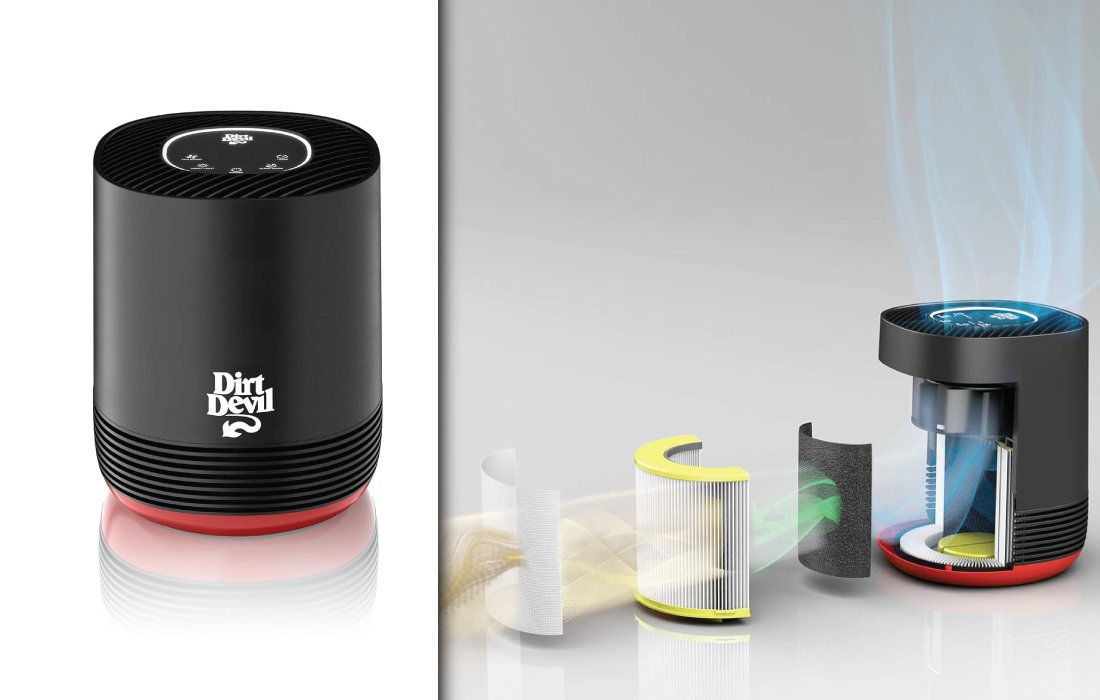
Incorporating Smart Climate Control
Smart thermostats and climate control systems bring convenience and precision to studio cooling. These devices learn your schedule and preferences to adjust temperatures automatically, ensuring your workspace is cool and comfortable when you need it most. They can be controlled remotely via smartphone apps, allowing you to pre-cool the studio before your work session begins. Many smart systems also integrate with other smart home devices, such as window sensors and fans, creating a fully automated ventilation setup that optimizes both comfort and energy efficiency.
Investing in Zoned Cooling Systems
For larger design studios or shared workspaces, zoned cooling systems offer the ability to cool specific areas independently. This prevents energy waste and ensures that only occupied zones receive cooling. Zoned systems often pair with smart controls, allowing multiple designers to adjust settings according to their preferences without affecting others. This flexibility supports productivity and comfort, particularly in collaborative environments with varied temperature needs.
Maintaining Ventilation Equipment
Cleaning Fan Blades and Filters
Dust buildup can reduce the efficiency of fans and AC units. Clean them regularly to maintain optimal airflow.
Checking for Air Leaks
If using an AC, ensure windows and doors seal properly to prevent cool air from escaping.
Scheduling Professional Maintenance
Annual servicing of air conditioners and ventilation systems ensures they operate efficiently and avoid sudden breakdowns.
Ergonomics and Cooling: Working Together
Positioning Your Desk Near Ventilation Sources
The placement of your desk can significantly influence both your comfort and productivity. Positioning your workspace close to windows, air vents, or fans allows you to take full advantage of natural and mechanical airflow. This proximity helps keep you cooler without having to rely on running air conditioners or fans at full power. It also ensures you receive fresh air throughout your work session, reducing the buildup of stale air and preventing discomfort caused by overheating.
Avoiding Direct Cold Air
While cooling is essential, exposure to direct cold air can cause discomfort and health issues, especially during long design sessions. Direct airflow on your hands, neck, or back may lead to stiffness, muscle cramps, or chills, which can negatively affect your ability to work precisely. Using adjustable vents or fans that can be redirected helps maintain a comfortable environment. Position fans or vents so the air circulates around you gently rather than blasting directly at your body.
Balancing Lighting and Temperature
Lighting choices play a crucial role in managing your workspace temperature. Traditional incandescent bulbs generate a lot of heat, contributing to a warmer environment. Switching to LED lights reduces heat output significantly, helping keep your workspace cooler. Additionally, LED lights often offer adjustable color temperatures, which can help reduce eye strain during long design hours.
Supporting Posture to Aid Temperature Regulation
Good ergonomic posture not only prevents strain and injury but also helps your body regulate temperature more effectively. Sitting upright with proper back support allows better blood circulation, which can reduce feelings of sluggishness or overheating. Ergonomic chairs with breathable materials further enhance comfort by allowing airflow around your body, preventing heat buildup during extended sitting periods.
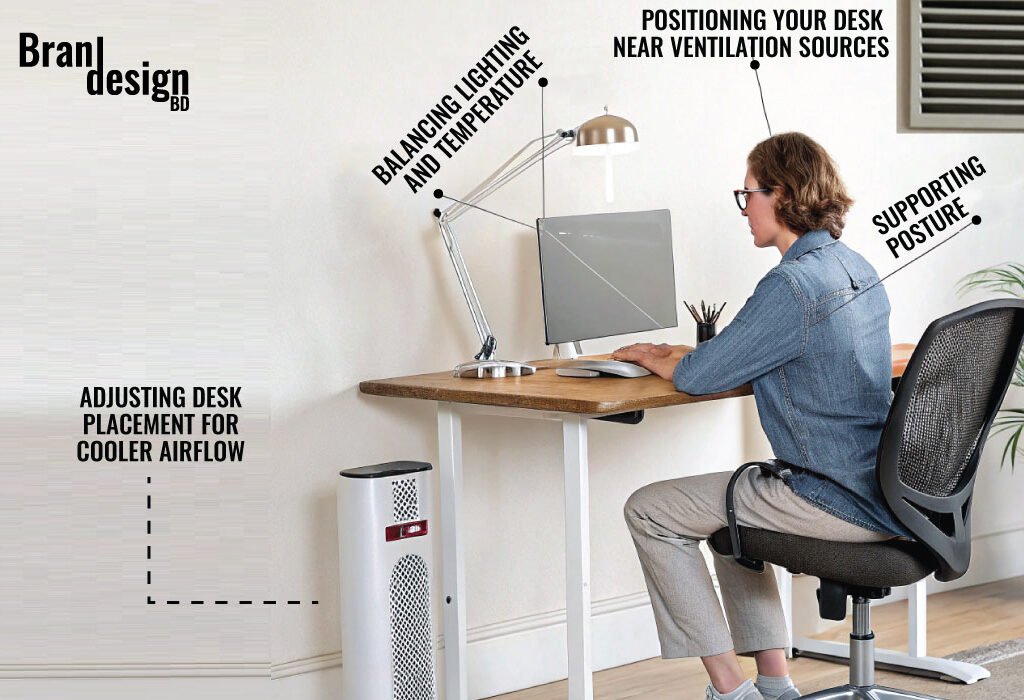
Seasonal Cooling & Ventilation Tips and Adjustments for Designers
Summer Strategies
Use blackout curtains to block sunlight during the hottest parts of the day. This prevents heat buildup in your workspace.
Winter Considerations
Even in colder months, proper ventilation is essential to prevent stuffiness. Slightly crack a window to maintain fresh air circulation without losing too much heat.
Adapting to Transitional Seasons
During spring and autumn, take advantage of mild weather by relying more on natural ventilation and less on mechanical cooling.
Combining Cooling & Productivity Practices
Structuring Work Around Cooler Times of Day
Schedule your most demanding tasks in the morning or evening when temperatures are naturally lower.
Integrating Breaks into Your Workflow
Short breaks every hour give your cooling systems a chance to keep up and help your body recover from prolonged sitting.
Monitoring Your Environment with Smart Devices
Smart sensors can track temperature, humidity, and air quality, sending alerts when adjustments are needed.
Common Mistakes to Avoid in Cooling & Ventilation
Overcooling the Workspace
Excessively low temperatures can cause muscle stiffness and discomfort, especially for tasks requiring fine motor control.
Ignoring Humidity Levels
Too much humidity can make a room feel hotter, while too little can cause dry skin and eye irritation. Aim for a balanced 40–60% humidity level.
Blocking Air Vents
Furniture or storage boxes placed in front of vents can significantly reduce airflow efficiency.
Conclusion
Maintaining comfort during long design work sessions isn’t just about personal preference—it directly impacts your creativity, efficiency, and well-being. By applying these cooling & ventilation tips, you can create a workspace that supports your best work without the distraction of heat and stale air.
From simple solutions like using desk fans and wearing breathable fabrics to advanced upgrades like smart climate control, each adjustment contributes to a more pleasant and productive environment. With a thoughtful approach to cooling and ventilation, you’ll not only protect your health but also elevate the quality of your design work for years to come.
Also, check the recent article about the best laptop for graphic design here.
The best ways include using desk fans or ceiling fans to improve airflow, setting air conditioners to moderate temperatures, opening windows for natural ventilation, and minimizing heat-producing equipment. Proper desk placement near vents and wearing breathable clothing also help maintain comfort.
Good ventilation improves air quality and temperature control, reducing fatigue, headaches, and eye strain. This helps designers stay focused and creative for longer periods, boosting overall productivity.
Natural ventilation can be very effective, especially with cross-ventilation where windows on opposite sides are open. However, in hot or humid climates, it’s often best combined with fans or air conditioning for consistent comfort.
A temperature between 22°C and 24°C (72°F to 75°F) is generally comfortable for most people. This range keeps the body cool without causing stiffness or discomfort, especially important for tasks requiring fine motor skills.
Regular maintenance is key. Clean fan blades and air filters every few weeks to prevent dust buildup that can reduce efficiency. Annual professional servicing for air conditioners is recommended to maintain optimal performance.
Yes, chairs with breathable mesh backs improve airflow and help prevent heat buildup on your body, making long sitting periods more comfortable in warm conditions.


